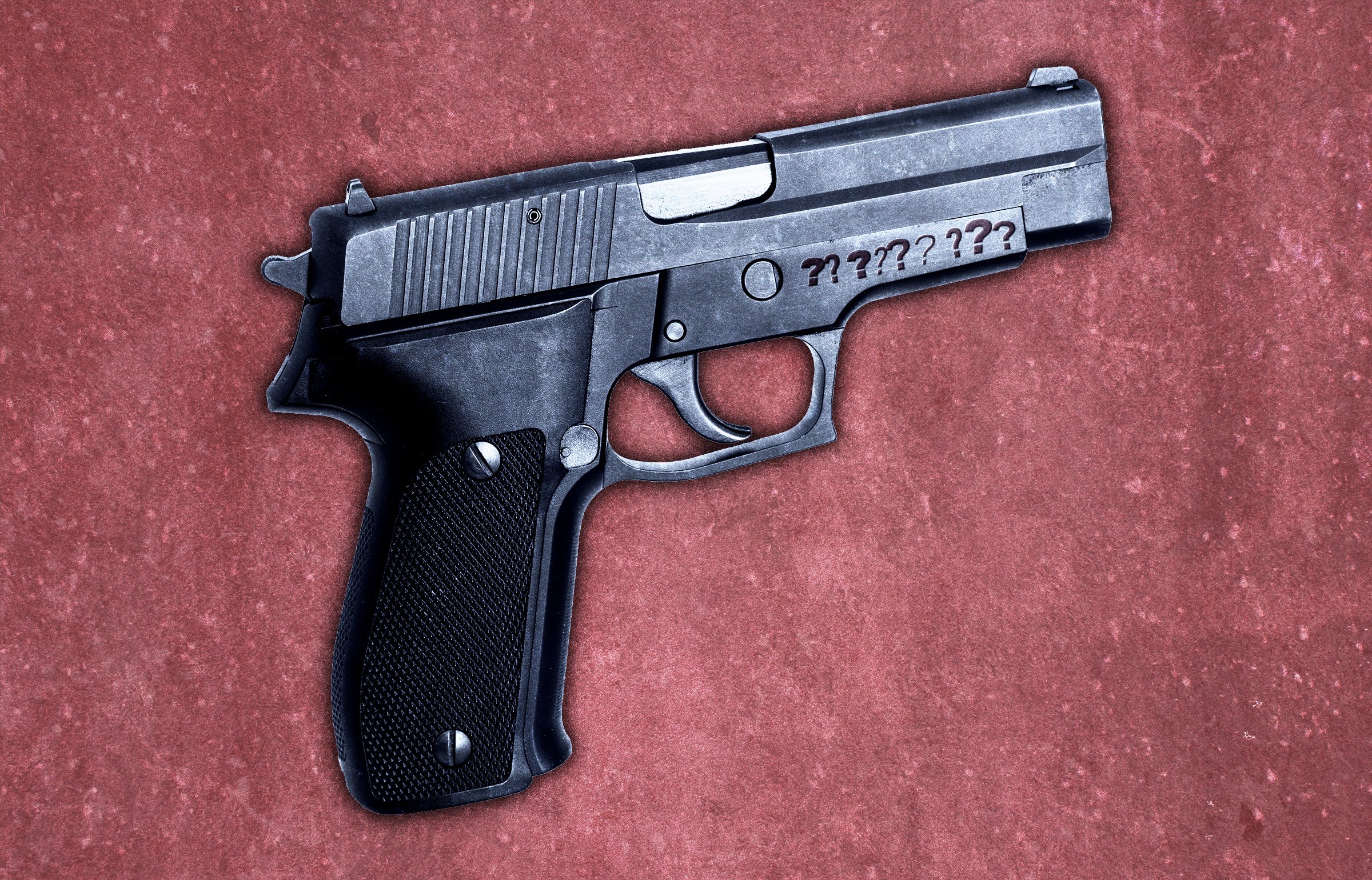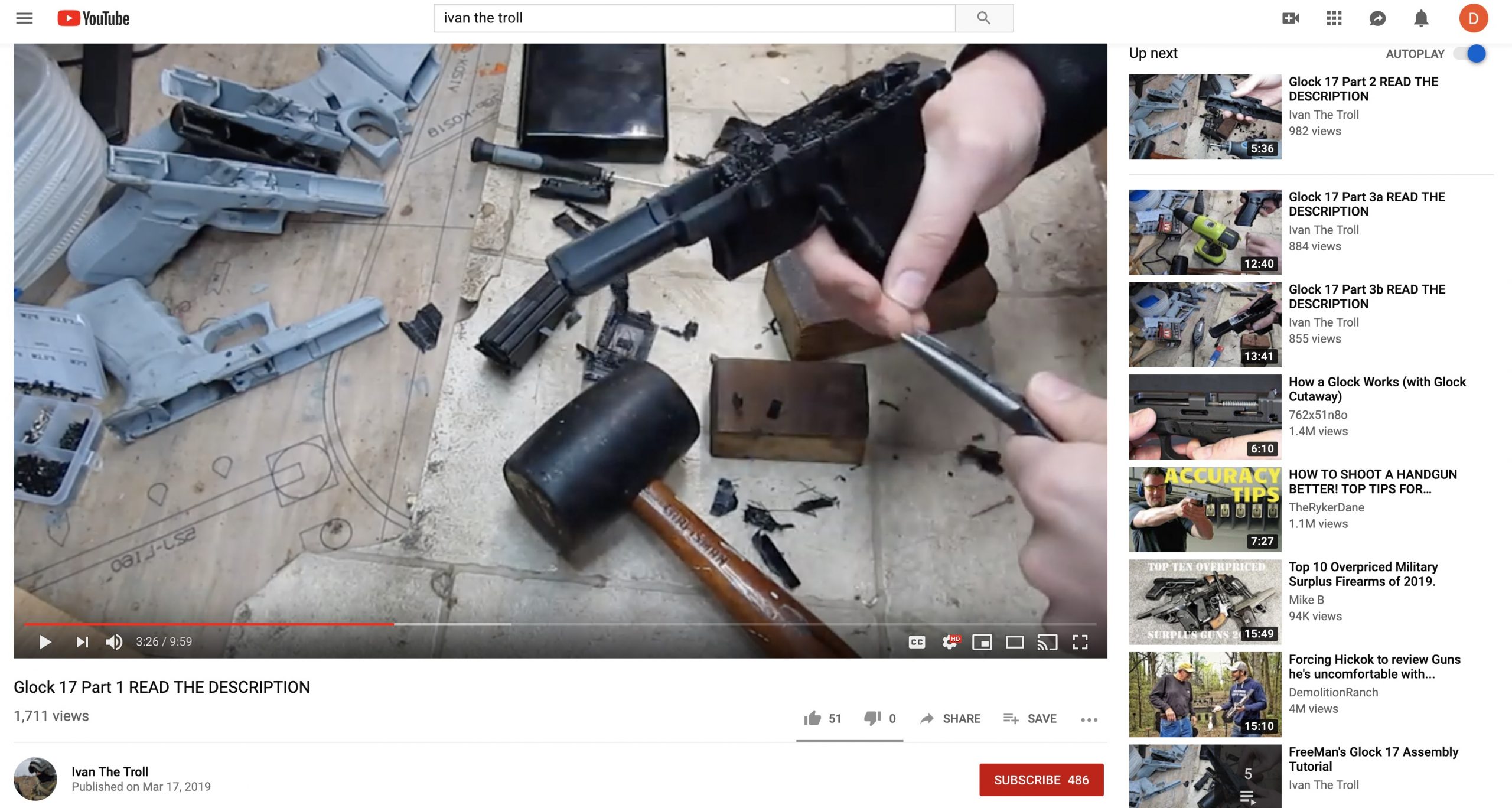The 30-round rifle magazine has been the standard high-capacity magazine for more than three decades. These devices are used by the military and police around the world, and can be found accompanying popular civilian rifles like the AR-15. Online, they can be purchased for as little as $8 apiece.
The reason for the 30-round magazine’s popularity is simple: It hits a technological sweet spot. Magazines with larger capacities, while available, are often cumbersome and unreliable. Their size makes lying prone difficult. And the number of moving parts means they often jam. As a result, larger devices have remained more novelty than practical accessory for over a century.
That’s now changing. Spurred by the opportunity to land lucrative military contracts, American-based firearms accessory companies have developed a new generation of high-capacity magazines. The devices are compact, lightweight, and strong, holding anywhere from 40 to 100 rounds, allowing their users to fire far more before having to reload. Experts say these larger models are growing in popularity, and will soon dominate the civilian market.
Rick Vasquez, a former official at the Bureau of Alcohol, Tobacco, Firearms and Explosives who runs a security firm, says larger-capacity magazines have sold “like hotcakes” as more companies have developed them. “The sales of these things are going to go through the roof,” he said.
The new products have a cult following among gun enthusiasts looking for the best and most technologically advanced gear. But there’s another category of gun owner seeking out larger, highly functional magazines: mass shooters.
A review of police records by The Trace shows that the perpetrators of some of the most high-profile shootings over the last five years involved magazines with capacities over 30 rounds. In July 2016, incensed by police shootings of unarmed black men, a former Marine with ties to the black separatist movement ambushed and killed three police officers in Baton Rouge, Louisiana. The gunman, clad in body armor and a ski mask, was eventually killed by SWAT officers. Police recovered a Israeli-made assault-style rifle loaded with a 40-round magazine. In October 2017, the Las Vegas gunman used an arsenal of rifles equipped with 40-, 60-, and 100-round magazines to fuel a stream of gunfire that left 58 dead and more than 400 injured. When police finally breached the hotel room where the shooter launched his assault, they found stacks of the magazines strewn about his makeshift bunker.
The perpetrators of the mass shootings in Sutherland Springs, Texas; Parkland, Florida; and Christchurch, New Zealand; all possessed the latest generation of extended magazines.

The Trace confirmed that all the magazines acquired by these shooters, excluding the one in Parkland, were manufactured by two U.S.-based companies: SureFire, a tactical light manufacturer that also sells firearms accessories, and Magpul, an upstart in the firearms industry known for its lightweight, polymer magazines. Neither company responded to requests for comment.
“They know damn well they are highly increasing the lethality of firearms available to the public — for profit,” said Jay Wachtel, a retired Criminal Justice professor at Cal State Fullerton and a former ATF agent. “It’s really a breakdown in the commercial conscience.”
Indeed, research suggests that mass shootings involving high-capacity magazines generate more death and injury.
Many of the developments in magazine technology run parallel to the needs of the military, as gun companies predict and chase emerging trends in the armed forces and then release resulting products onto the civilian market, either as surplus or to gain consumer momentum.
When the AR-15’s military counterpart, the M16, was first introduced to troops during the Vietnam War, it boasted a modest 20-round magazine. In the late 1960s, military Special Forces began experimenting with magazines that could carry significantly more ammunition. The Army surveyed soldiers on the ground to study usage of the rifles, and found that troops overwhelmingly wanted a higher magazine capacity. In 1968, Army researchers officially recommended that the M16 be accompanied by 30-round magazines.
In 1980, NATO followed the U.S. military’s lead, adopting the 30-round magazine for standard use. The NATO Standard Agreement magazine, or STANAG, is currently compatible with 75 different types of rifle, in addition to the AR-15 and its derivatives. Surplus production and its usability with a variety of weapon types cemented it among civilian shooters as well.
“There is some trickle-down effect,” said Jurgen Brauer, an economist at Augusta University whose consulting firm, Small Arms Analytics, watches market trends. Brauer said there is little definitive information on the firearms accessories market, but explained that researchers generally believe military demands drive civilian firearm trends. “Producing anything for the military market in essence subsidizes R&D costs for future civilian market sales,” he said.
In 2008, when the Marines announced they were looking for an extended magazine for the new M27 rifle, both SureFire and Magpul jumped on the opportunity. Surefire produced both 60– and 100-round high-capacity magazines, which were reportedly being tested for the M27. In 2013, Magpul released a 40-round magazine, which the company said was made with the Marines’ new rifle in mind. In 2015, Magpul upped the ante, releasing a 60-round drum magazine, a cylindrical container that feeds bullets through a spring-loaded spiral. Magpul confirmed that the magazine was being tested by the military, and photos slipped out of a Special Forces operator allegedly using one overseas. In 2017, a Magpul representative, a former Marine who admitted to hating the drum magazines of yesteryear, told the Military Times that its newest iteration “runs flawlessly.” Later that year, Magpul secured a $12 million contract to deliver 30-round magazines to the Air Force, Army, and Marines.
Recognizing the opportunity for big profits, investors have poured millions of dollars into firearms accessories manufacturers. In 2007, Goldman Sachs acquired a 15 percent stake in Surefire. But after the company’s 60- and 100-round magazines were found to be used in the Las Vegas mass shooting, the investment bank said it would “exit this investment as soon as possible.”
Magpul also drew the eyes of of New York-based financiers. In 2011, Triangle Capital, which has historically backed clothing companies like Tommy Bahama and Liz Lange Maternity, poured $14.8 million into the company. That same year, Bruckmann, Rosser, Sherrill & Co., a private equity firm known for its food-related investments in Golden Corral and Zatarain’s, also backed Magpul.
Michael Cargill, the owner of Central Texas Gunworks in Austin, said most customers seek the higher ammo capacity for “fun,” but added that fears of a future ban on high-capacity magazines are pushing customers to stock up. Cargill, who is suing the ATF for requiring him to hand over his inventory of bumpstocks, said that in the wake of the Virginia Beach shooting, in which a gunman used a .45-caliber pistol enhanced with an extended magazine to kill 12 people, customers are acting fast. “If a shooter uses something, people are going to want to get that item,” Cargill said.
The relationship between high-capacity magazines and mass carnage has made them a target of regulators. The Federal Assault Weapons Ban prohibited the manufacture of magazines holding more than 10 rounds from 1994 until 2004. Due to a “grandfather” provision, which allowed the sale and ownership of magazines produced before the ban, it is unclear if the law was effective in stopping their use in crimes. However, as The Trace has reported, in some states, including Maryland, police recoveries of high-capacity magazines declined while the ban was in effect, indicating a drop in use.
Since the federal ban expired, nine states and the District of Columbia have implemented their own laws to regulate the sale or possession of high-capacity magazines. In 2016, California passed a law criminalizing the possession of magazines with a capacity of more than 10 rounds.
But in the majority of states, high-capacity magazines, and the new extended magazines that carry upward of 40 rounds, are free to purchase without a background check. And police are now confiscating extended-capacity magazines with an increasing regularity. Would-be mass shooters have also been caught with them.
In 2016, a Northern California man clad in body armor attempted to assassinate two police officers in front of a Starbucks. When they chased him down and recovered his weapon, they found a souped up AR-15 loaded with a Magpul 60-round drum.
In 2018, a man in Fairfield, California, positioned his van at the back door of a police department. When a city employee reported him acting erratically, police confronted him, retrieving a cache of weapons, including a 40-round magazine nestled inside an assault rifle. That same year, Matthew R. Smith, a 37-year-old man from Willisburg, Kentucky, was wrestled out of his vehicle by police for trespassing at a manufacturing plant. When police dragged Smith out, they found a fully automatic AR-15 loaded with a 40-round magazine resting in the passenger seat, one of seven other guns recovered from the vehicle. Smith later admitted he was scoping out the location for a potential mass shooting.


